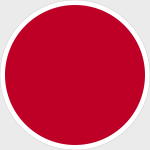DeAgostini DAWF17 Imperial Japanese Navy Mitsubishi A7M2 Reppu "Sam" Fighter - Third Prototype, 1944 [With Collector Magazine] (1:72 Scale)
"We have resolved to endure the unendurable and suffer what is insufferable."
- Japanese Emperor Hirohito speaking to the Japanese people after the atomic bombings, August 1945
 The Mitsubishi A7M Repuu, ("Strong Wind") was designed as the successor to the Imperial Japanese Navy's A6M Zero, with development beginning in 1942. Performance objectives were to achieve superior speed, climb, diving, and armament over the Zero, as well as better maneuverability. To meet these performance specifications its size and weight were significantly greater than its predecessor. The A7M's allied code name was "Sam".
The Mitsubishi A7M Repuu, ("Strong Wind") was designed as the successor to the Imperial Japanese Navy's A6M Zero, with development beginning in 1942. Performance objectives were to achieve superior speed, climb, diving, and armament over the Zero, as well as better maneuverability. To meet these performance specifications its size and weight were significantly greater than its predecessor. The A7M's allied code name was "Sam".
Towards the end of 1940, the Imperial Japanese Navy asked Mitsubishi to start design on a carrier-based fighter, to meet specification 16-Shi (a designation under a system using regnal years that indicated "1941" - the year in which the specification was formally issued). The fighter would be the successor to the carrier-based Zero. At that time, however, there were no viable high-output, compact engines to use for a new fighter. In addition, Jiro Horikoshi's team was preoccupied with addressing early production issues with the A6M2b as well as starting development on the A6M3 and the 14-Shi interceptor (which would later become the Mitsubishi J2M Raiden, a land-based interceptor built to counter high-altitude bombers). As a result, work on the Zero successor was halted in January 1941.
In April 1942, the development of the A6M3 and the 14-Shi interceptor was complete, and the Japanese Navy once again tasked Mitsubishi and Horikoshi's team with designing a new Zero successor to become the Navy Experimental 17-shi Ko (A) Type Carrier Fighter Reppu. In July 1942 the Navy issued specifications for the fighter: it had to fly faster than 345 kn (639 km/h; 397 mph) above 6,000 m (20,000 ft), climb to 6,000 m (20,000 ft) in less than six minutes, be armed with two 20 mm cannon and two 13 mm (0.51 in) machine guns, and retain the maneuverability of the A6M3.
As before, one of the main hurdles was engine selection. To meet the specifications the engine would need to produce at least 2,000 hp (1,500 kW), which narrowed choices down to Nakajima's NK9 (Ha-45/Homare), or Mitsubishi's MK9 (Ha-43); both engines still being under development. These engines were based on 14-cylinder (Nakajima Sakae and Mitsubishi Kinsei, respectively) engines converted to 18-cylinder power plants. The early NK9 had less output but was already approved by the Navy for use on the Yokosuka P1Y Ginga, while the larger MK9 promised more horsepower.
Pictured here is a 1:72 scale replica of a Imperial Japanese Navy Mitsubishi A7M2 Reppu "Sam" fighter.
Now in stock!
Dimensions:
Wingspan: 5-1/4-inches
Length: 5-inches
Release Date: February 2021
Historical Account: "Wing Loading" - With the larger, more powerful engine, wing loading became an issue. The Navy requested at most 150 kg/m2, but wanted 130 kg/m2 which complicated design considerations further. With the NK9 it could achieve 150 kg/m2, but with the less power it would not meet the specifications for maximum speed. With the MK9 the engineers concluded it could fulfill the requirements; however, production of the MK9 was delayed compared to the NK9, and the Japanese Navy instructed Mitsubishi to use the NK9.
Work on the 17-Shi was further delayed by factories prioritizing A6M and Mitsubishi G4M production as well as further work on A6M variants and addressing Raiden issues. As a result, the 17-Shi, which became the A7M1, officially flew for the first time on May 6th, 1944, four years after development started. The aircraft demonstrated excellent handling and maneuverability, but was under-powered as Mitsubishi engineers feared, and with a top speed similar to the A6M5 Zero. It was a disappointment, and the Navy ordered development to stop on 30 July 1944, but Mitsubishi obtained permission for development to continue using the Ha-43 engine, flying with the completed Ha-43 on October 13th, 1944. The A7M2 now achieved a top speed of 628 km/h (339 kn; 390 mph), while climb and other areas of performance surpassed the Zero, leading the Navy to change its mind and adopt the craft. The A7M2 was also equipped with automatic combat flaps, used earlier on the Kawanishi N1K-J, significantly improving maneuverability.
In June 1945, ace pilot Saburō Sakai was ordered to Nagoya to test the prototype. He was favorably impressed.


